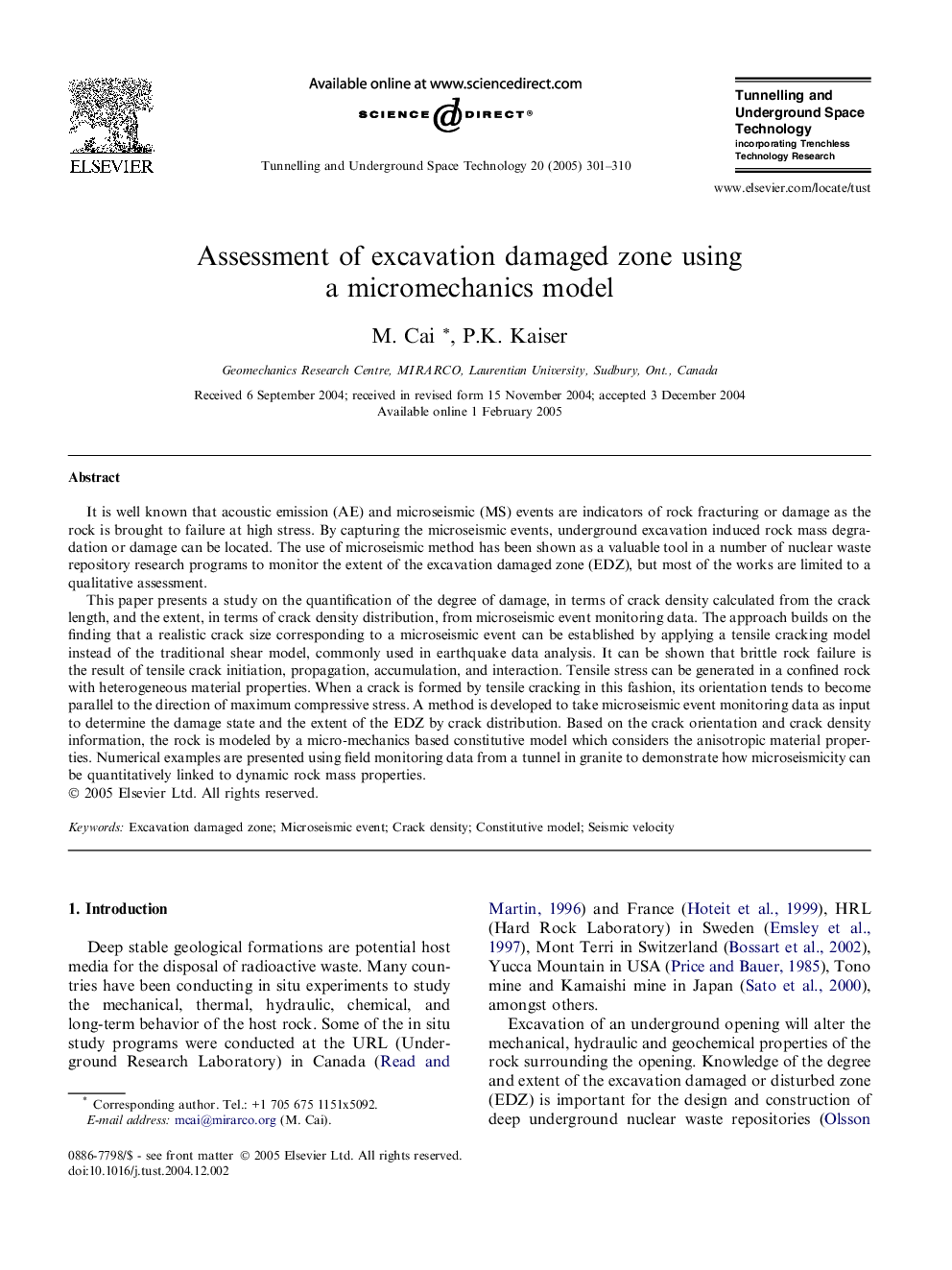| Article ID | Journal | Published Year | Pages | File Type |
|---|---|---|---|---|
| 10296815 | Tunnelling and Underground Space Technology | 2005 | 10 Pages |
Abstract
This paper presents a study on the quantification of the degree of damage, in terms of crack density calculated from the crack length, and the extent, in terms of crack density distribution, from microseismic event monitoring data. The approach builds on the finding that a realistic crack size corresponding to a microseismic event can be established by applying a tensile cracking model instead of the traditional shear model, commonly used in earthquake data analysis. It can be shown that brittle rock failure is the result of tensile crack initiation, propagation, accumulation, and interaction. Tensile stress can be generated in a confined rock with heterogeneous material properties. When a crack is formed by tensile cracking in this fashion, its orientation tends to become parallel to the direction of maximum compressive stress. A method is developed to take microseismic event monitoring data as input to determine the damage state and the extent of the EDZ by crack distribution. Based on the crack orientation and crack density information, the rock is modeled by a micro-mechanics based constitutive model which considers the anisotropic material properties. Numerical examples are presented using field monitoring data from a tunnel in granite to demonstrate how microseismicity can be quantitatively linked to dynamic rock mass properties.
Related Topics
Physical Sciences and Engineering
Earth and Planetary Sciences
Geotechnical Engineering and Engineering Geology
Authors
M. Cai, P.K. Kaiser,
